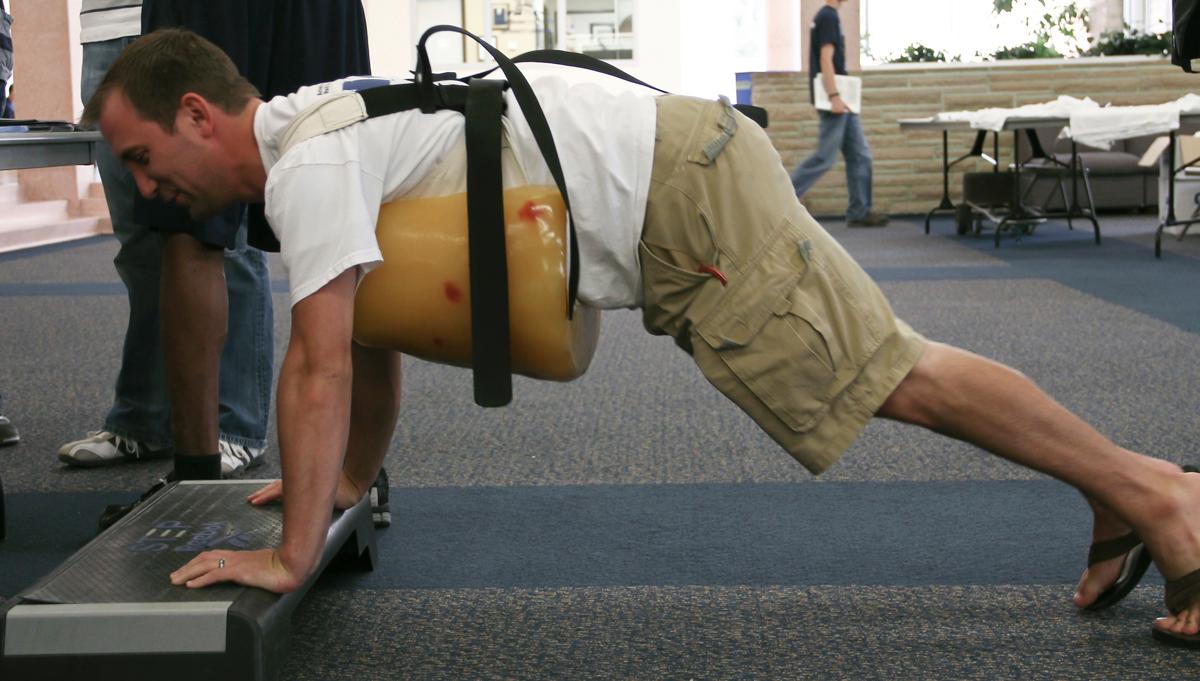College of Ag hosts fair to promote healthy lifestyles
The College of Agriculture held a health expo called “i am healthy” in the Taggart Student Center, Friday. The expo was an installment of Ag Month.
The expo was designed to promote healthy lifestyles, Agriculture Council Activities Chairman Brian Hadfield said.
The program was made to “help people open their eyes to what is healthy, and what can help them to promote a healthier lifestyle among the students and faculty that were involved,” Hadfield said.
College of Agriculture Academic Senator Jarvis Pace said he wants the health expo to become a tradition at USU.
“It’s something that we did last year, and it was very well received. We liked the partnership that we’ve had with the Wellness Center and the Be Well program,” Pace said.
The International Lounge in the TSC was filled with booths during the expo, sponsored by various organizations including: the Employee Wellness Center, the Dietetic Student Association, Pre-SOMA (Student Osteopathic Medical Association), and the Office of Student Sustainability.
The Employee Wellness Center had a booth for testing various aspects of students’ bodies.
“They asked us to come and do some screenings. We have blood pressure screenings, body fat, body mass index (BMI) and grip strength. We’re here representing Employee Wellness, but I really want to encourage wellness across campus, not just for employees, but students as well,” Wellness Coordinator Dayna Barrett said.
Barrett and and other members of the Employee Wellness staff let students use a hand-held dynamometer to test their grip strength, a bioelectrical impedance analysis to check their BMI and body fat percentages, and a blood pressure cuff to check blood pressure. Barrett said a good blood pressure is at or below 120/80.
“I have seen students that have high blood pressure, and they didn’t know it,” Barrett said. “You look at somebody and they may look healthy, but inside their heart may be working very hard to pump that blood through the rest of that body. Looks can be very deceiving.”
The Employee Wellness Center also had models of fat at their booth. They had several “fat vests” ranging from one pound to 20 pounds for students to wear while doing push-ups.
“One pound doesn’t sound like much, five pounds doesn’t sound like much, but over time gaining one or five pounds in a year — that adds up — especially if you’re a young 18-year-old college student,” Barrett said.
The Dietetic Student Association asked students to guess how much sugar was in some common food items.
President of the Dietetic Student Association Cami Jo Satterthwaite said, “With our booth today, we are doing sugar awareness to be aware of how much sugar you are actually consuming, especially in processed foods. Students need to realize how much is added in order to make these products shelf stable.”
Satterthwaite and other members of the Dietetic Student Association had students pick a food product from the table and guess how many teaspoons of sugar were in that product, by scooping teaspoons of sugar into a bowl. Satterthwaite said many students were surprised to find out that one 20-ounce bottle of Dr Pepper had 17 teaspoons of sugar.
President of Pre-SOMA Braden Brklacich said his organization was there to help students learn about osteopathic medicine, which combines traditional medicine with a holistic approach.
“Their approach is looking at the body as a whole. Mind, spirit and body — everything connected. It’s also to help students here learn more about the osteopathic field — support physicians that are now in medical school or practicing here in the community,” Brklacich said.
Sustainability intern Brad Armstrong represented the Office of Student Sustainability at the expo. Its booth encouraged students to go green.
“The goal is to improve the sustainability here on campus, to make this campus greener and more environmentally friendly, and to encourage students to change their lifestyle enough to live healthier, and live more sustainably,” Armstrong said.
Armstrong said the easiest way for students to live more sustainably would be to drive less and recycle more.
The expo also had unmanned booths with fliers containing information about whole grains, beans and other food groups. The College of Agriculture also had a booth selling T-shirts, and Dining Services had a table of whole-wheat bread for students to eat.
– chris.w.lee@aggiemail.usu.edu


